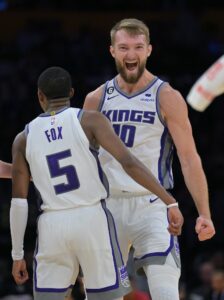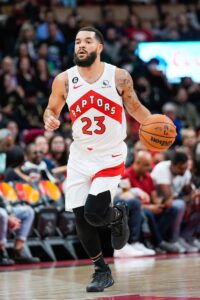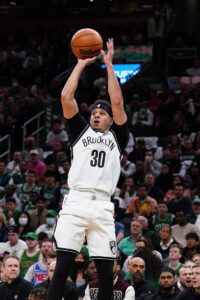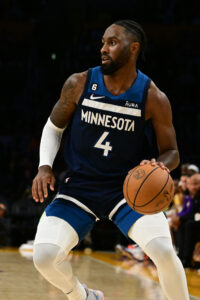We’re at the five-week mark of the NBA season and a number of players who expected to play key roles for their respective teams have found themselves out of the rotation this fall.
Knicks wing Evan Fournier, for instance, began the season as a starter, was moved into a reserve role, and then was taken off the court altogether — he hasn’t appeared in any of New York’s last five games. Kings big man Richaun Holmes, who opened the season as the team’s primary backup center, has since ceded that role to Chimezie Metu and has played just six garbage-time minutes in Sacramento’s last seven contests.
Fournier and Holmes are two of the veterans named by John Hollinger of The Athletic as players who could benefit from a change of scenery. However, both are on eight-figure multiyear contracts that won’t necessarily be easy to move. Heat forward Duncan Robinson, another player on Hollinger’s list, fits into that category too.
Many of the other players Hollinger identifies as potential change-of-scenery candidates are younger and cheaper. Sixers swingman Matisse Thybulle and Pelicans big man Jaxson Hayes were both eligible for rookie scale extensions prior to this season, but didn’t sign them and are now on track for restricted free agency in 2023. Hayes has barely played for New Orleans, while Thybulle’s minutes have been inconsistent, even as several Philadelphia players battle the injury bug.
Magic wing R.J. Hampton is another former first-round pick on Hollinger’s list who is in a contract year, though it’s because Orlando turned down its 2023/24 team option, not because he’s in his fourth year. As Hollinger observes, Hampton has actually played reasonably well when given the chance this season, knocking down 43.8% of his three-point attempts, but the Magic’s option decision signals that he’s probably not in the club’s long-term plans, and it’s unclear how often he’ll get to play once Orlando’s injured guards (including Cole Anthony and Markelle Fultz) get healthy.
The other players mentioned by Hollinger include Hawks big man John Collins, once again the subject of trade rumors; Celtics guard Payton Pritchard, a victim of a deep backcourt who could be a trade chip if Boston seeks frontcourt help; Rockets guard Eric Gordon, stuck on one of the NBA’s worst teams for a third straight year; and Hornets center Mark Williams, a lottery pick who has been tearing up the G League but has only played 13 minutes in three games at the NBA level (Hollinger doesn’t expect Charlotte to trade Williams, but would like to see the struggling club give him a shot at the NBA level).
We want to know what you think. Which players on Hollinger’s list would benefit most from a change of scenery? And which other players around the NBA are good candidates to flourish if given a new opportunity?
Head below to the comment section to weigh in with your thoughts!
 The Kings addressed their outside shooting in all sorts of different ways, drafting
The Kings addressed their outside shooting in all sorts of different ways, drafting  Certain extension-eligible players, including perhaps
Certain extension-eligible players, including perhaps 
